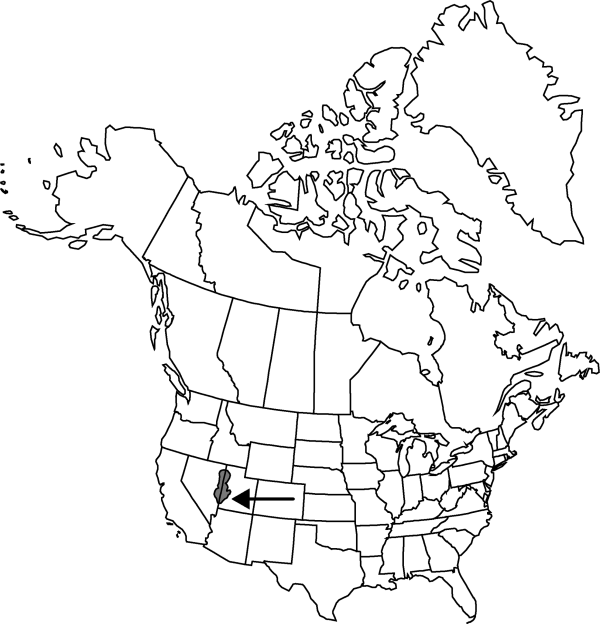Sclerocactus pubispinus
Cact. Succ. J. (Los Angeles) 38: 103. 1966.
Stems unbranched (2–3-branched), light green, depressed hemispheric to ovoid or cylindric, 4–15 × 3–15 cm; ribs (11–) 13–14, tubercles prominent on ribs. Spines not obscuring stems; radial spines (6–) 8–11 (–16) per areole, spreading, white or with dark tips, 4–35 × 0.3–1 mm; central spines (0–) 4 (–6) per areole; abaxial central spines 1 (–3) per areole, tan, brown, reddish, or black, usually hooked, terete to angled, 10–55 mm; lateral spines usually (0–) 2 (–4) per areole, white, tan, red or reddish-brown, usually hooked, except on some older areoles, 10–30 mm; adaxial spines 1 per areole, tipped white or dark, flattened, 5–25 (–60) × 0.5–1 (–2.2) mm. Flowers tubular, funnelform to campanulate, 2–4 × 2–4 cm; outer tepals with pink to yellowish-brown, greenish brown or reddish-brown midstripes and cream, yellow, pink, or reddish purple margins, usually oblanceolate, 10–20 × 4–8 mm, margins entire to irregularly toothed; inner tepals cream with yellow, greenish, reddish purple, lavender or brownish midstripes and lighter margins, oblanceolate to narrowly oblanceolate, 15–25 × 4–8 mm, margins entire to minutely toothed apically; filaments cream, yellow, green, red-violet, or pink; anthers yellow; styles minutely and sparsely papillate. Fruits dehiscent along 2–4 vertical slits, green or pink, barrel-shaped, 9–12 × 8–10 mm, dry; scales few, membranous, scarious-margined. Seeds black, 2.5–4 × 2–2.9 mm; testa with rounded papillae.
Habitat: Light colored soils of limestone or dolostone origin, sagebrush and shadscale flats, pinyon-juniper woodlands
Elevation: 1400-2200 m
Discussion
Sclerocactus pubispinus is very similar to S. spinosior, and the two taxa have historically been confused. In addition to the features noted in the key, S. pubispinus generally has one dark red, robust, hooked central spine and two less stout, hooked central spines that are initially dark red and quickly fade to white, and flowers that are usually yellow to bronze. By contrast, S. spinosior generally has three stout, dark red central spines, the abaxial spine hooked, and flowers that are usually purple to cream. However, in juvenile (pre-reproductive) stages, the species are nearly indistinguishable.
Selected References
None.
